Designing Esports Streams for the Novice Viewer
Understanding how visual overlays on esports streams can increase knowledge and enhance the experience for new viewers
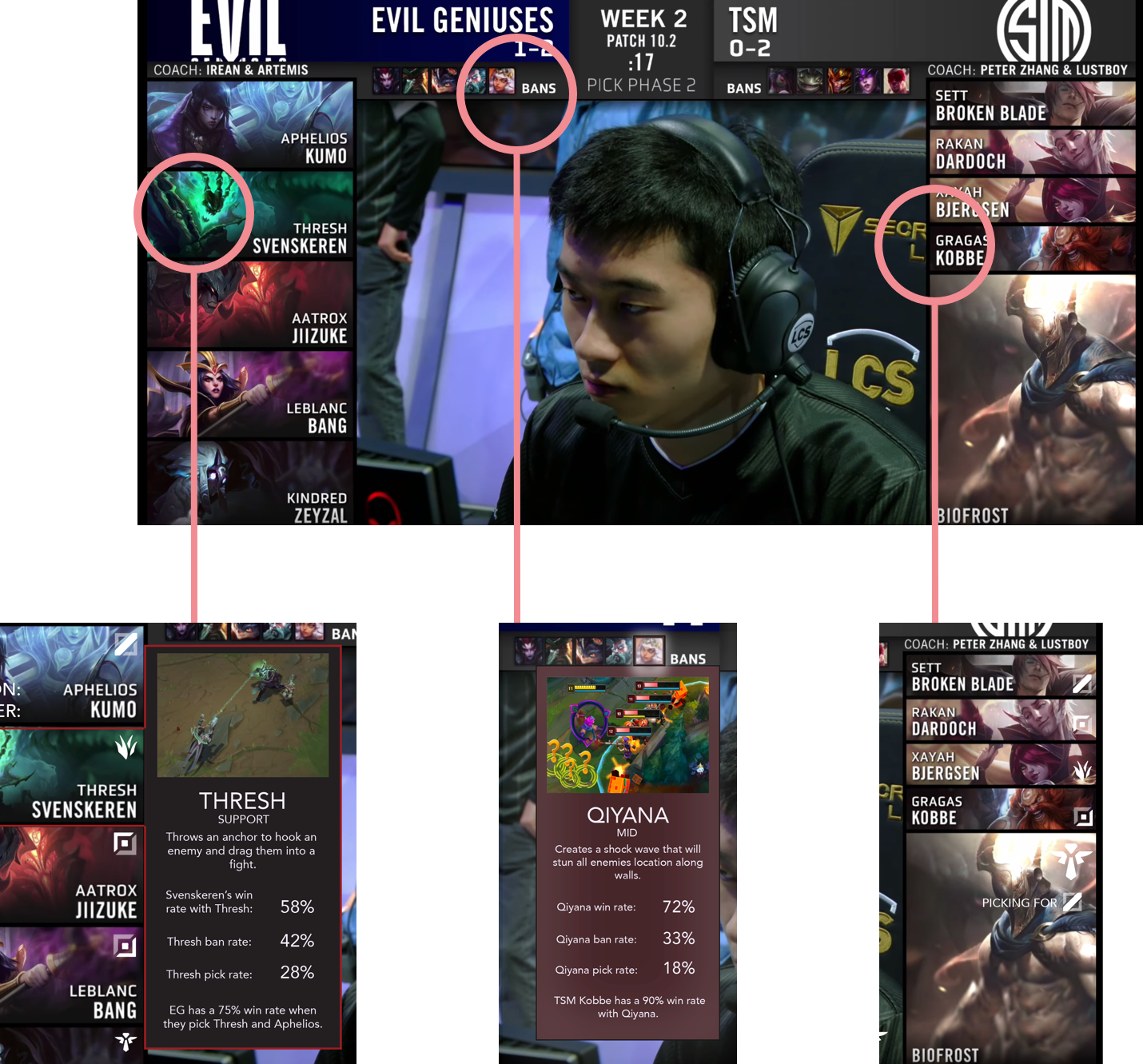

600 million consumers globally will watch esports in 2023, up 79% from 2017. Because of this rise in esports, there is a need to accomodate a more broad audience as it becomes more available on different channels, and as more and more people get invested. The best way to understand an esport currently is to play the video game for oneself, and esports streams do not currently try to help a wider audience understand the game.
By understanding novice viewer motivations and needs when it comes to watching traditional sports and esports, I will create a framework for enhancing the esports viewing experience through enhancing understanding of the game. By creating optional visual overlays on top of an existing stream, my solution will not lessen the viewing experience for seasoned viewers, and give the option for new viewers gain visual assistance to create a better understanding and appreciation of the game.
• UX Designer
• Researcher
• Me
• Researchers in the IMTC Lab at Georgia Tech
• Industry Professionals from Turner and Riot Games
• Interviews
• Obversations
• Affinity Mapping
• Comparative Analysis
• Participatory Design Workshop
• To be continued...
First, I had to understand general motivations and reasonings for why people watch or play sports. I could use this information to translate general motivations from traditional sports into a foundation for esports.
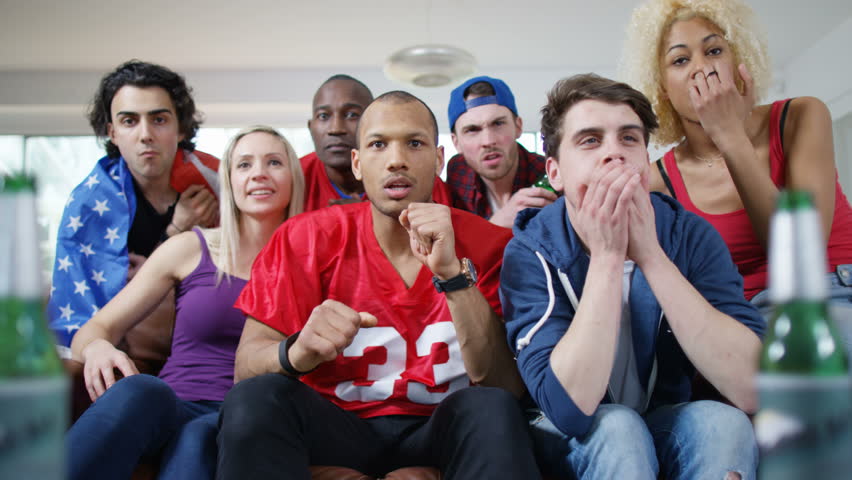
Most participants learned the sports that they enjoy through their family and friends.
When participants talked about their favorite sports, they focused a lot on how the stories of their favorite teams and players shaped the game.
Based on my interviews, I came to learn how all participants learned sports they enjoy through friends and family. I wanted to replicate that experience for esports. I wanted to understand what new viewers' opinions are on the esports game as they watch it, and how I (a domain expert) can interact with new viewers. This would allow me to understand the nuances of a person's journey to enjoy and learn a sport (an esport in this case), since I did not get these detailed findings from my interviews.
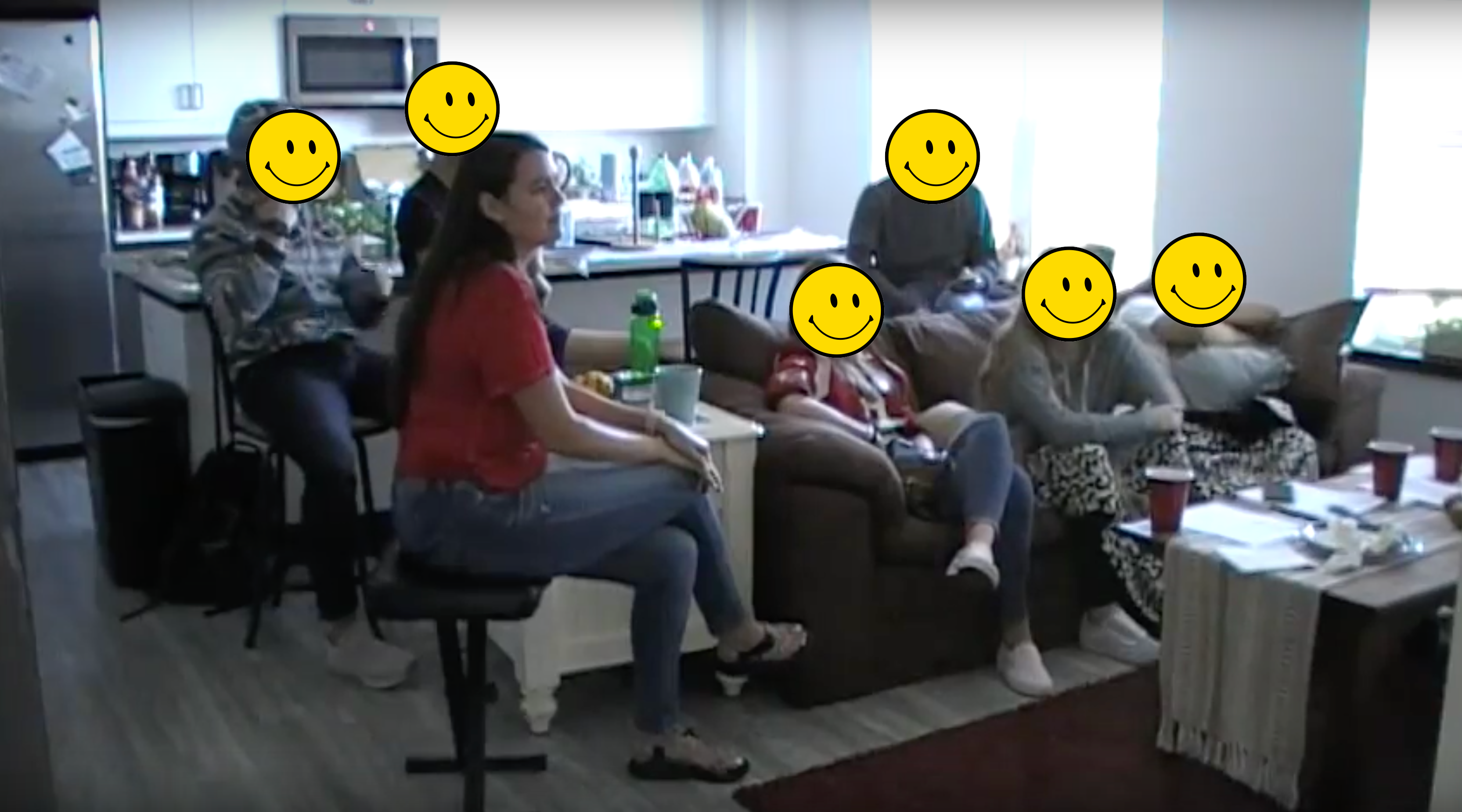
Even though the game did not help the viewers understand the rules of the game, viewers still enjoyed looking at all the chaos and following players.
Viewers appreciated the game more when they understood the player's roles and the rules of the game. Viewers were able to call out plays and associate players with their characters as the game went on, enabling them to learn and enjoy the game more.
Next, I created an affinity map to understand the major themes of novice viewing that I gained from my research. This way, I could use these themes to influence my designs.
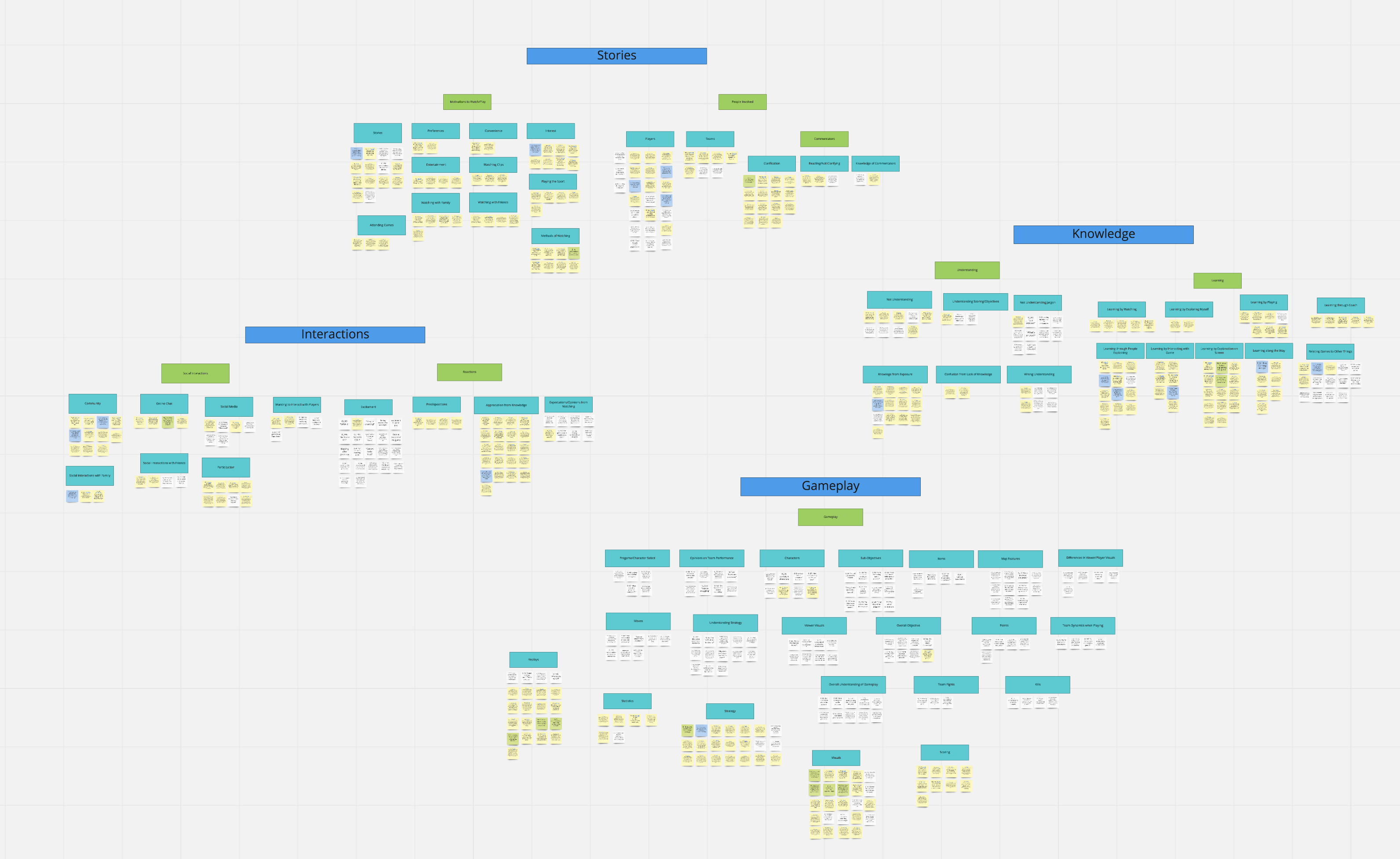
Rules are important to understand the implications of plays in the game.
Understanding aspects of a game originate from playing the game or friends and family teaching it. Viewers have lots of questions about the game, and not everyone has the knowledge to explain it.
Learning about the history of teams and their players enhances the dynamics of the matchup.
Seeing reactions from fans, commentators, players, and friends or family enhances the viewing experience.
I was able to inform designs for the Interactions and Stories themes from my previous research. However, I needed some more nuanced information for the Gameplay and Knowledge categories in order to inform my designs properly. With this codesign workshop, I was able to understand what viewers were confused about, if they were interested in learning more, and how they would prefer to learn about this information in the game.

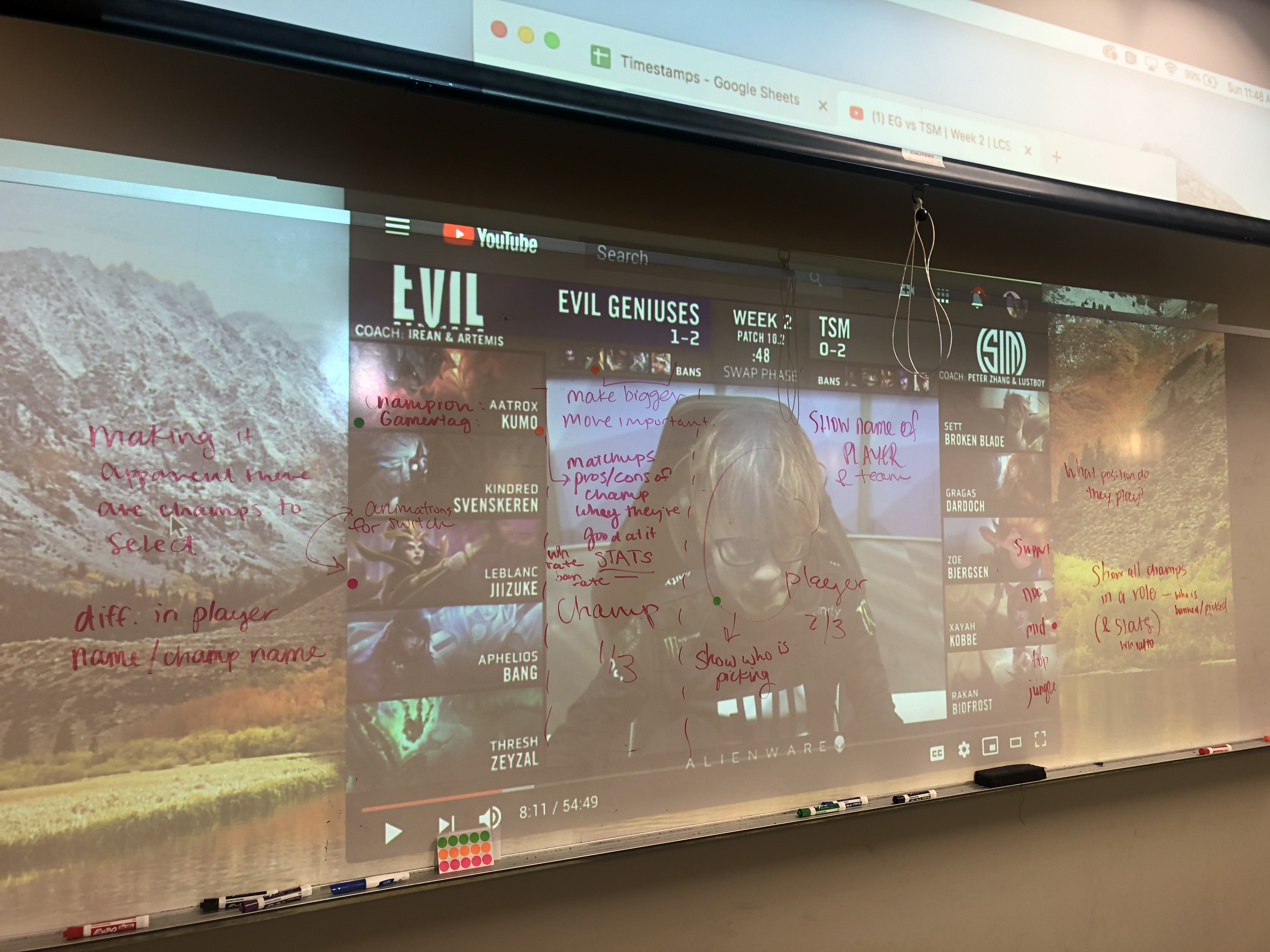
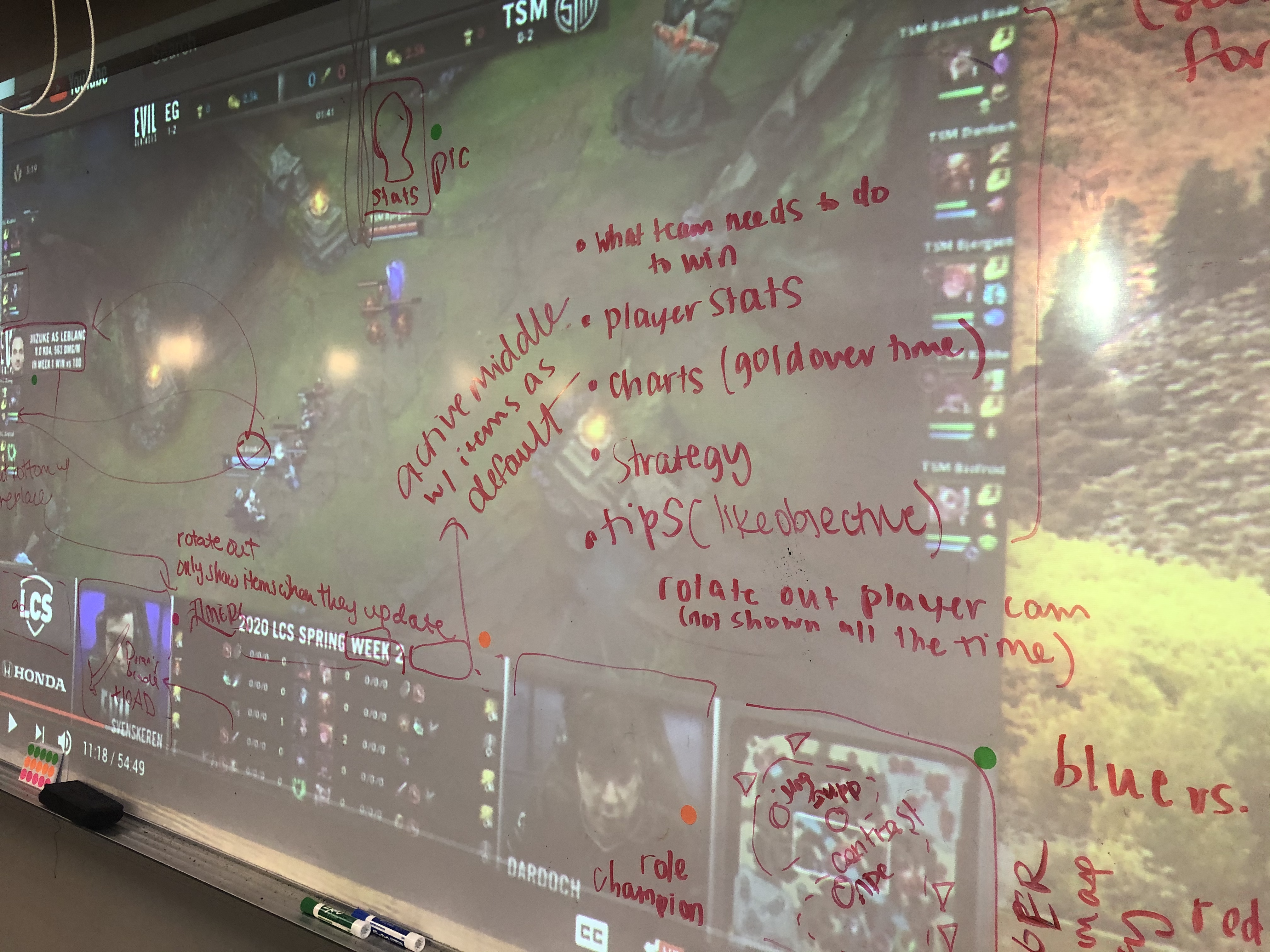
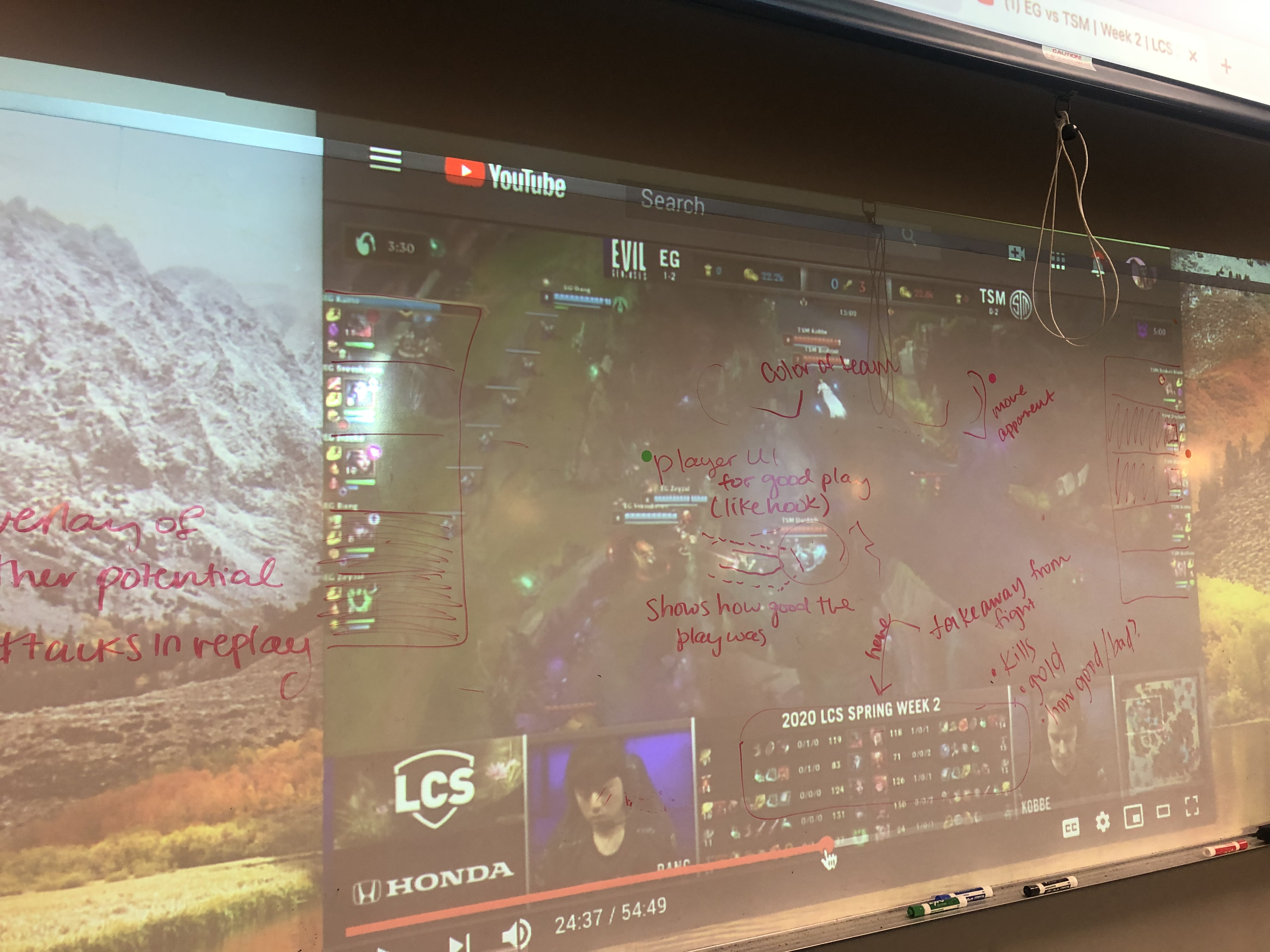

In the session, participants were quick to call out what they did not understand, and were able to come up what they would ideally like to see from the experience to help keep them in the know.
Understanding what participants were confused about can translate to many different games. Objectives, champion selection, team fights, compositions, and many more elements span across all esports, and need better guidance for novice viewers. By ideating solutions in this session, I can understand how I might translate it across other esports.
From the participatory design session, I needed to map out ideas in order to create usability tests to see if the proposed ideas stand up in real time.




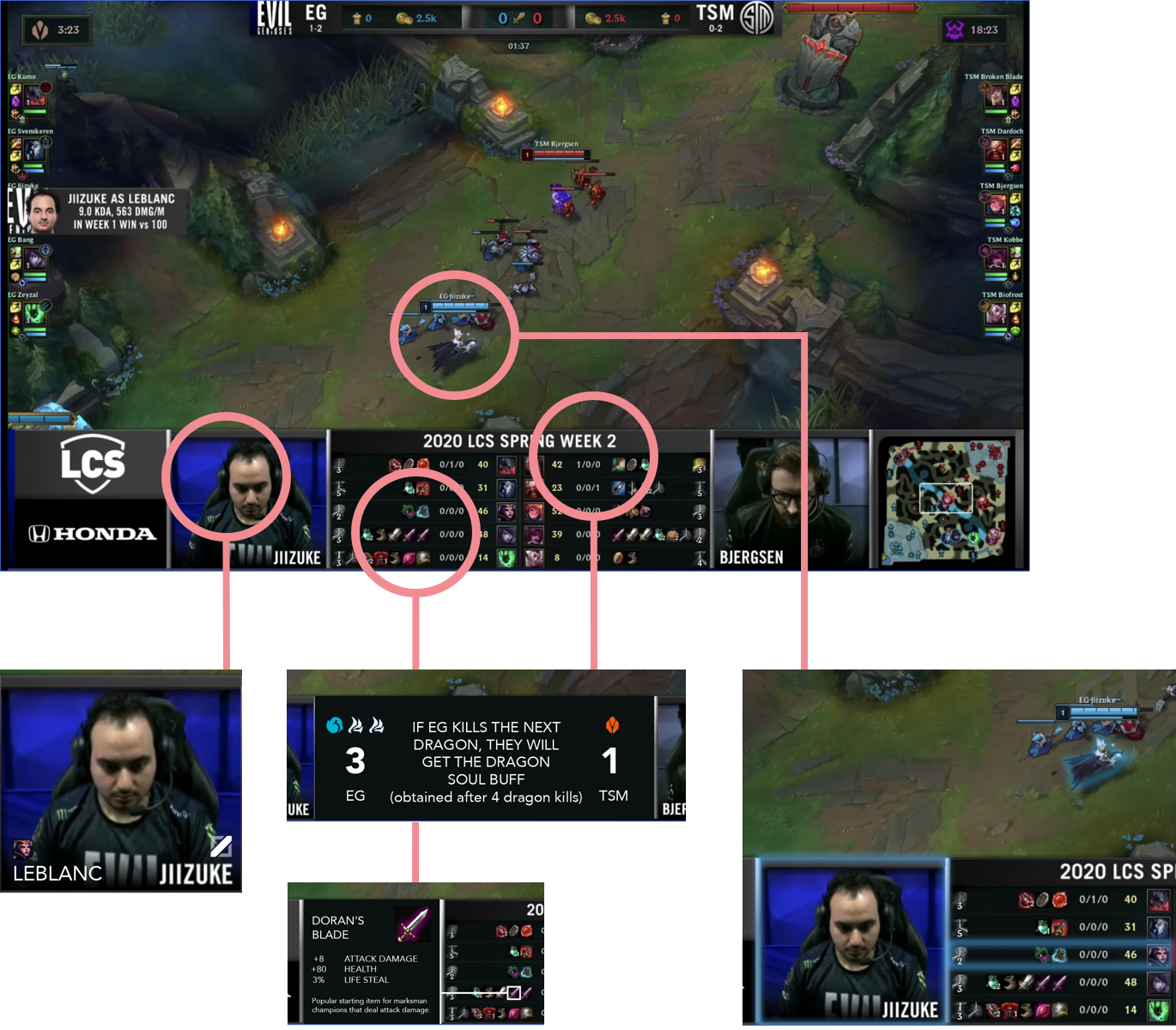
Click the links to view the videos: